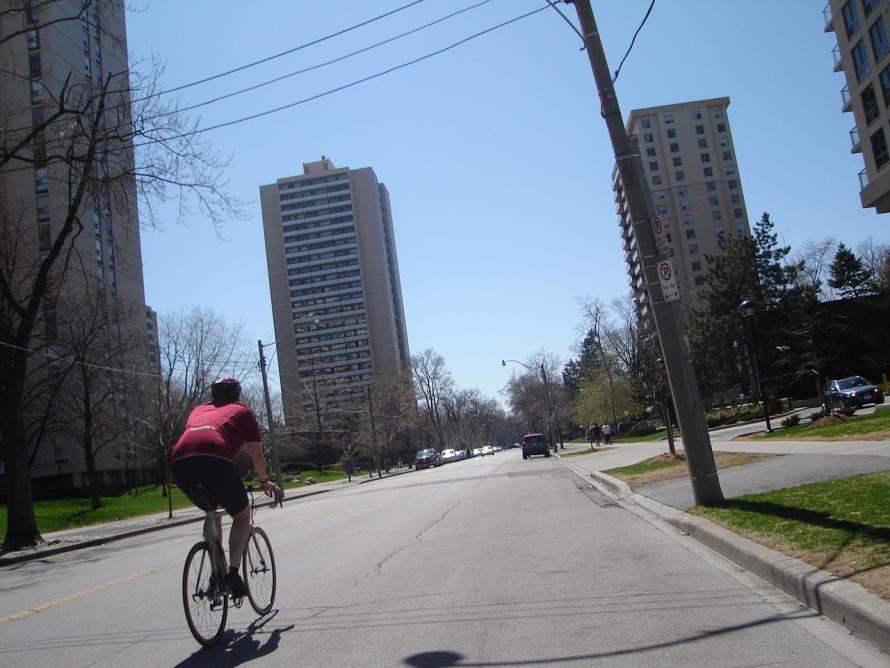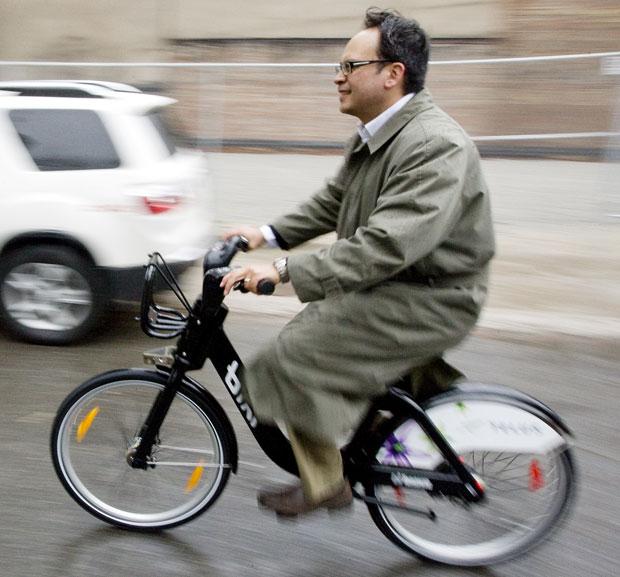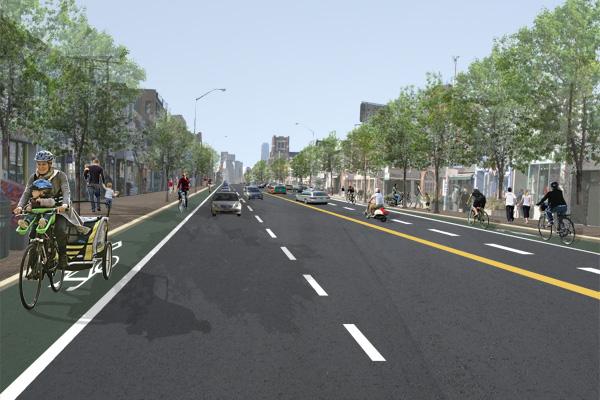"Reaching the milestone of one million BIXI trips in 18 months is a significant achievement," said Councillor Denzil Minnan-Wong (Ward 34, Don Valley East), chair of the City's Public Works and Infrastructure Committee. "This is proof of the popularity of BIXI as a convenient, safe and practical option for traveling in the downtown core." (City News Release, Oct 2012. Image of Denzil Minnan-Wong from National Post)
BIXI opened 2 years ago with 1000 bikes. Montreal, on the other hand, launched with 3,000 bicycles in 2009 and expanded to 5,000 bicycles in the same year. Even more exciting, New York City's Citi Bike bikesharing system will open this spring with 10,000 bikes. Toronto’s system originally called for 3000 bicycles distributed between Dupont Street to the north, Lake Ontario to the south, Broadview Avenue to the east and High Park to the west.
Jared Kolb of Cycle Toronto notes that City data shows “the highest rates of use are on the periphery. If you’re going to make a proper investment, you have to have a larger network.” To that end Cycle Toronto launched a petition to Toronto businesses to have them express their support for a BIXI expansion. Many businesses see this as an easy win. Make it easier for customers or employees to get to their stores and they benefit.
But BIXI almost didn't open at all. Some City bureaucrats had advised Mayor Miller that BIXI would fail and weren't willing to recommend its eligibility for a loan guarantee. Miller eventually over-ruled those concerns when the cycling community made some noise.
BIXI Toronto operates on a shoestring. One only needs to compare the price tags among public transit options to see how cheaply BIXI provides flexibility to urban transportation, all without any real subsidy. The TTC capital expenses are 100% covered by the public purse. One subway train alone costs around $8.6 million (Star), which is more than the entire capital cost of the current BIXI Toronto system ($4.8 million). Yet BIXI Toronto has to pay all of its capital expansion costs, with only a small break in interest payments through the loan guarantee.
Toronto has made no expansion plans since BIXI's launch. The right wing administration is reluctant to support an expansion of BIXI. Denzil Minnan-Wong, the conservative chair of the public works committee, has been a reluctant champion of BIXI by posing for photo-ops when BIXI launched, saying "But now that it's here, you've gotta support it". Minnan-Wong more recently told Torontoist that “You want to get your finances done right. It may be more incremental, but what we want to do is ensure BIXI’s success, and that may require smaller steps than big leaps.” He noted that Montreal's BIXI ran into financial difficulties even with three times the number of bikes. “We don’t have a lot of extra money to put into any projects right now,” he added, citing a transportation department backlog “north of $300 million.”
What Councillor Minnan-Wong fails to mention, however, is that Transportation Services is actually incapable of spending the capital budget it is already allocated in any year. This is not intuitive so let me explain. The City has a capital budget for Transportation Services and the City will pay interest on that funding whether it gets spent or not for that year. The City, however, doesn't have enough planners, engineers and other staff to plan and carry out all the capital projects. So the money just sits there costing us interest. Why don't we, I ask, make good use of that funding to support BIXI expansion? As a turnkey operation it could quickly be expanded, would use existing capital budget thus wouldn't cost taxpayers anything extra. And it would pay dividends down the road by reducing transportation costs across the board.
BIXI is growing to be a key part of our urban transportation mix, extending the usefulness of public transit. Councillor Layton notes when traffic is heavy, riding his bike along King Street West is faster than going by car or streetcar. “I think if I park a BIXI next to these streetcar stops, people will get fed up and hop on a BIXI,” Layton said. “Then within six months they will have purchased a bike.” The investment hasn't matched that potential.
Staff have been working hard to find ways to expand BIXI short of coming hat in hand to City Council. They've been investigating "creative funding tools" (Torontoist) including corporate sponsorships and Section 37 development funds as Councillor Mike Layton has recently accomplished with a development in his ward 19. Staff are working on a report to City Council that "will flesh out details on funding models and an expansion strategy, and include specific recommendations to city council for next steps."
Cycle Toronto hopes that City Council will become convinced of the economic benefits of BIXI and will listen to the many businesses that want it to extend to their neighbourhoods as quickly as possible. We need to get beyond saving our pennies to try to expand the system piecemeal when the potential economic benefit is so large.



